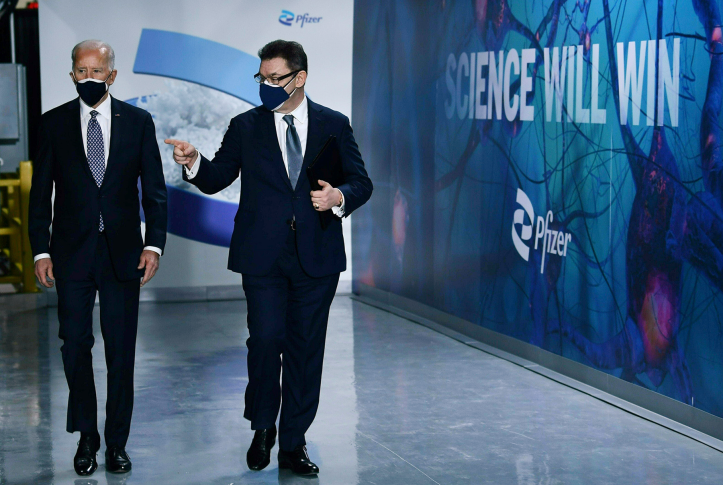The National Institutes of Health (NIH) works with pharmaceutical companies to investigate and develop new treatments or cures. The rapid development of vaccines for COVID-19 is one example of how this kind of public–private partnership can work to advance the development of innovative medicines.
These partnerships, however, raise complex issues in terms of who owns the invention and who benefits from its commercialization. While Congress has previously enacted laws to address these questions, disputes keep cropping up, particularly around how much American patients should be charged for a drug their taxpayer dollars helped finance. This issue has remained in focus as policymakers, industry leaders, and advocates debate how to address the high cost of prescription drugs.
The Bayh–Dole Act and “March In” Rights
Congress has attempted to clarify how and when an invention supported with public funds must be made available to consumers under the Bayh–Dole Act. Passed in 1980, Bayh–Dole gives the right to federal agencies that have funded the development of an invention to “march in,” in certain instances, and take the patent license for themselves, or grant it to others, including competitors. Under Bayh–Dole, these march-in rights may be used when a federal agency determines that a contractor has not taken steps to “achieve practical application of the invention,” to “alleviate health or safety needs” that are not being met, to “meet requirements for public use specified by federal regulations,” or when a company fails to manufacture the patented products substantially in the United States.
A Longstanding Debate
Policymakers have long debated whether the march-in authority granted to federal agencies under Bayh–Dole can or should be used to address the high cost of prescription drugs. The NIH has been asked by members of Congress and the public to exercise its authority to do so several times, but in each case the agency denied the request.
Most recently, in November 2021, a group of cancer patients petitioned the NIH to exercise its march-in rights over concerns regarding the price of the prostate cancer treatment Xtandi. The petition argues that the cost of Xtandi is unreasonably high, with a price of $106.865 per 40 mg. pill in the U.S. compared to $20 to $40 in other high-income countries.
This isn’t the first time the NIH has been petitioned regarding Xtandi. In 2016, a similar request was made, but the NIH declined to intervene or address the issue of the drug’s price. The agency refused to exercise its march-in rights because it deemed the drug was broadly available and was not at risk of being in short supply.
There are other instances where the NIH has been asked to use march-in rights over price concerns. For example, the agency was asked to intervene twice — in 2004 and again in 2012 — to address the high cost of the HIV/AIDS treatment Norvir. In 2004, it was asked to exercise march-in rights over the price of the glaucoma drug Xalantan. In each case, the NIH argued that the issue of drug pricing should be left to Congress.
Congress Weighs In
Several members of Congress have weighed in on the latest Xtandi petition. In February, Representatives Peter DeFazio (D–Ore.) and Lloyd Doggett (D–Texas), along with several other members of the House of Representatives, sent a letter to the Secretary of Health and Human Services (HHS), urging the agency to exercise its march-in rights for Xtandi, noting that President Biden’s 2021 Executive Order on Competition and HHS’s September report on high drug prices “[indicate] that the federal government would take the pricing of products into account when considering march-in petitions.” Nine days later, Representative Doggett joined Senators Elizabeth Warren (D–Mass.) and Angus King (I–Maine) in a similar letter.
On the other hand, Senators Thom Tillis (R–N.C.) and Marsha Blackburn (R–Tenn.) sent a letter describing calls for the NIH to use its march-in rights on Xtandi “toxic to America’s biopharmaceutical innovation” and argue that “march-in rights, exercised inappropriately, would destroy the development of new, innovative, and lifesaving medications.”
How Will the NIH Respond?
Policymakers are likely to continue to debate whether a federal agency should have control over pricing and accessibility regarding taxpayer-funded inventions, and the impact of such control on future innovation. Given the NIH’s longstanding hesitancy to use its march-in authority under Bayh–Dole to address issues related to drug pricing, it seems unlikely the agency will reverse course. Even if the NIH were to grant march-in rights in this case, it is likely it would be challenged in court, questioning whether Bayh–Dole provides the agency with the authority to use the rights in this way. Ruling in favor of the petitioners asking the NIH to march in would set a precedent that could impact future pricing of pharmaceutical products, as well as the industry’s willingness to partner with government agencies to develop and commercialize new therapeutics.


